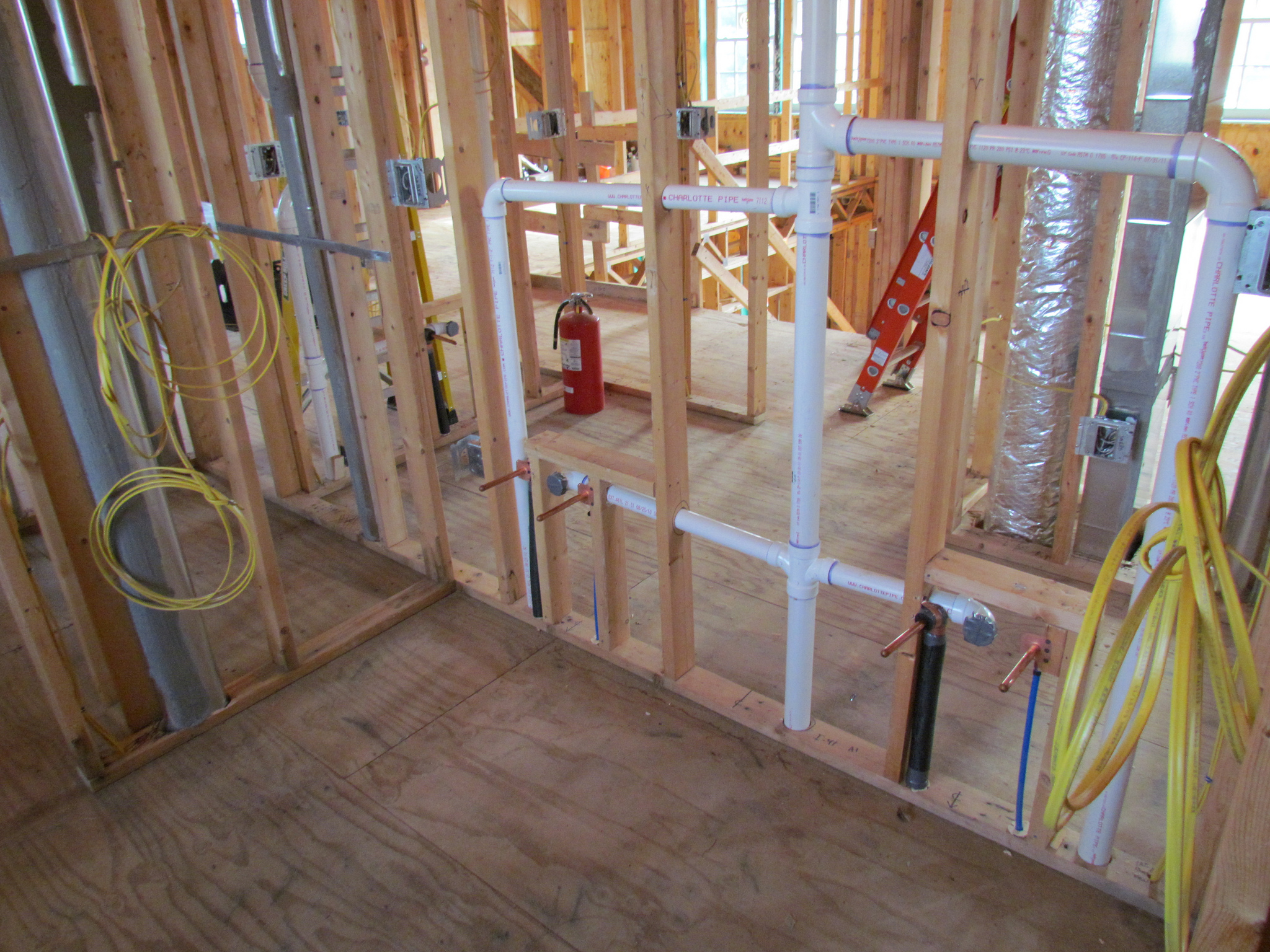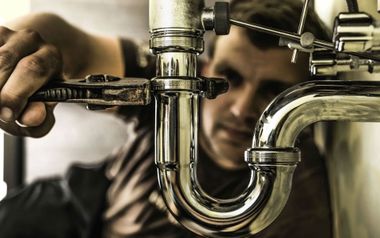Why The Design of Your Home's Plumbing System Matters
Why The Design of Your Home's Plumbing System Matters
Blog Article
How do you feel on the subject of Exploring Your Homes Plumbing Anatomy?

Understanding just how your home's pipes system works is necessary for every homeowner. From supplying tidy water for drinking, food preparation, and showering to safely eliminating wastewater, a properly maintained plumbing system is vital for your family members's health and comfort. In this thorough overview, we'll explore the elaborate network that comprises your home's pipes and offer suggestions on upkeep, upgrades, and taking care of common issues.
Introduction
Your home's pipes system is greater than simply a network of pipes; it's a complicated system that guarantees you have accessibility to tidy water and efficient wastewater removal. Understanding its elements and just how they interact can help you avoid expensive repair services and guarantee whatever runs smoothly.
Fundamental Parts of a Plumbing System
Pipes and Tubes
At the heart of your pipes system are the pipelines and tubes that bring water throughout your home. These can be made from various materials such as copper, PVC, or PEX, each with its benefits in regards to toughness and cost-effectiveness.
Components: Sinks, Toilets, Showers, and so on.
Fixtures like sinks, toilets, showers, and bath tubs are where water is utilized in your home. Understanding just how these components link to the plumbing system helps in detecting troubles and preparing upgrades.
Valves and Shut-off Factors
Shutoffs manage the flow of water in your plumbing system. Shut-off shutoffs are vital during emergencies or when you require to make repair services, enabling you to separate parts of the system without interrupting water flow to the whole house.
Water System
Main Water Line
The major water line connects your home to the metropolitan water supply or a personal well. It's where water enters your home and is distributed to various fixtures.
Water Meter and Pressure Regulatory Authority
The water meter steps your water usage, while a stress regulator ensures that water moves at a risk-free pressure throughout your home's pipes system, stopping damages to pipes and fixtures.
Cold Water vs. Warm water Lines
Understanding the difference between cold water lines, which supply water straight from the main, and warm water lines, which carry warmed water from the water heater, aids in fixing and planning for upgrades.
Drain System
Drain Water Lines and Traps
Drain pipes lug wastewater away from sinks, showers, and commodes to the drain or septic system. Catches avoid sewage system gases from entering your home and also catch debris that can create obstructions.
Ventilation Pipelines
Ventilation pipelines allow air right into the drainage system, stopping suction that could slow down drainage and trigger catches to empty. Correct ventilation is necessary for maintaining the stability of your pipes system.
Significance of Appropriate Water Drainage
Ensuring proper drain prevents backups and water damages. Consistently cleaning drains and maintaining traps can stop pricey fixings and expand the life of your plumbing system.
Water Heating System
Types of Water Heaters
Water heaters can be tankless or standard tank-style. Tankless heating systems warm water on demand, while storage tanks keep warmed water for prompt usage.
Just How Water Heaters Attach to the Pipes System
Recognizing exactly how hot water heater link to both the cold water supply and warm water circulation lines aids in detecting concerns like insufficient hot water or leaks.
Upkeep Tips for Water Heaters
Regularly flushing your water heater to eliminate debris, inspecting the temperature level setups, and inspecting for leaks can prolong its life expectancy and enhance power performance.
Usual Plumbing Issues
Leaks and Their Causes
Leaks can happen because of maturing pipelines, loosened installations, or high water stress. Addressing leaks promptly avoids water damage and mold growth.
Clogs and Blockages
Clogs in drains and bathrooms are typically triggered by purging non-flushable products or an accumulation of grease and hair. Utilizing drain displays and being mindful of what decreases your drains can avoid blockages.
Signs of Plumbing Problems to Watch For
Low water stress, slow-moving drains pipes, foul odors, or abnormally high water costs are indications of prospective plumbing troubles that need to be resolved without delay.
Pipes Maintenance Tips
Routine Assessments and Checks
Arrange annual pipes inspections to catch concerns early. Search for indications of leaks, deterioration, or mineral accumulation in faucets and showerheads.
Do It Yourself Maintenance Tasks
Simple jobs like cleaning tap aerators, looking for toilet leakages using color tablets, or shielding subjected pipes in cool climates can protect against major plumbing issues.
When to Call a Specialist Plumbing Technician
Know when a plumbing issue calls for expert competence. Trying intricate repair services without proper expertise can result in even more damage and greater repair service costs.
Updating Your Plumbing System
Factors for Updating
Upgrading to water-efficient components or replacing old pipes can boost water high quality, reduce water expenses, and increase the worth of your home.
Modern Plumbing Technologies and Their Advantages
Check out technologies like clever leak detectors, water-saving bathrooms, and energy-efficient water heaters that can conserve money and lower environmental influence.
Expense Considerations and ROI
Determine the upfront prices versus long-term financial savings when thinking about pipes upgrades. Numerous upgrades pay for themselves with reduced utility expenses and less repairs.
Environmental Influence and Preservation
Water-Saving Fixtures and Home Appliances
Mounting low-flow taps, showerheads, and toilets can substantially lower water usage without compromising efficiency.
Tips for Reducing Water Use
Simple habits like repairing leaks immediately, taking shorter showers, and running complete lots of laundry and dishes can save water and reduced your utility expenses.
Eco-Friendly Pipes Options
Consider sustainable pipes materials like bamboo for flooring, which is durable and green, or recycled glass for countertops.
Emergency situation Readiness
Steps to Take During a Pipes Emergency situation
Know where your shut-off valves lie and just how to turn off the supply of water in case of a ruptured pipeline or major leak.
Value of Having Emergency Situation Contacts Helpful
Keep get in touch with info for regional plumbing technicians or emergency situation solutions conveniently offered for fast action during a pipes situation.
Do It Yourself Emergency Fixes (When Appropriate).
Momentary solutions like making use of air duct tape to patch a leaking pipe or putting a container under a trickling tap can minimize damage until an expert plumbing technician shows up.
Verdict.
Recognizing the makeup of your home's plumbing system empowers you to maintain it efficiently, saving time and money on repair services. By complying with routine upkeep regimens and remaining educated concerning modern-day pipes modern technologies, you can guarantee your pipes system runs effectively for several years ahead.
Exploring Your Homes Plumbing Anatomy
Water Supply System
Main Water Line: This is where water enters your home from the municipal supply or a private well.
Water Meter: Typically located near where the main water line enters the property, it measures the amount of water used.
Shutoff Valve: It s crucial to know where this is in case of emergencies. It allows you to turn off the water supply to the entire house.
Pipes and Fittings: These distribute water throughout your home. Materials can include copper, PVC, or PEX.
Drain-Waste-Vent (DWV) System
Drains: Located in sinks, showers, and tubs, these carry wastewater away.
Traps: U-shaped pipes under sinks that hold standing water, blocking sewer gases from entering the home.
Vents: Pipes that lead from the DWV system to the outside, preventing vacuum formation and allowing gases to escape.
Sewer Line: Carries all wastewater from the home to the municipal sewer system or a septic tank.
Fixtures and Appliances
Sinks, Toilets, and Showers
Dishwashers and Washing Machines
Water Heaters
Maintenance Tips
Regularly check for leaks in exposed pipes and around fixtures.
Inspect the water heater annually for signs of wear.
Clean drains and traps to prevent clogs and odors.
Know how to shut off water to individual fixtures.
When to Call a Professional
Major leaks or burst pipes
Installation of new pipes or fixtures
Septic tank issues
Remodeling projects that involve plumbing changes
Conclusion
Understanding the anatomy of your home's plumbing is key to maintaining a functional and efficient system. Regular checks and knowing when to call in the experts can save you time, money, and stress.
https://www.mavyn.com/blog/exploring-your-homes-plumbing-anatomy

Exploring Your Homes Plumbing Anatomy
Water Supply System
Drain-Waste-Vent (DWV) System
Fixtures and Appliances
Maintenance Tips
When to Call a Professional
Conclusion
Understanding the anatomy of your home's plumbing is key to maintaining a functional and efficient system. Regular checks and knowing when to call in the experts can save you time, money, and stress.
https://www.mavyn.com/blog/exploring-your-homes-plumbing-anatomy
I was made aware of that editorial on Plumbing Installation 101: All You Need to Know from a good friend on our other blog. Remember to take the time to distribute this blog post if you appreciated it. Thanks a lot for being here. Come back soon.
Click Here Report this page